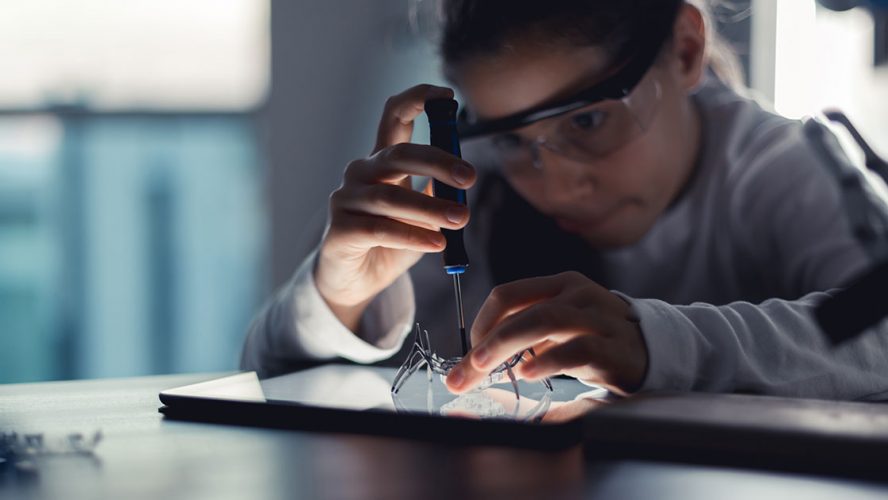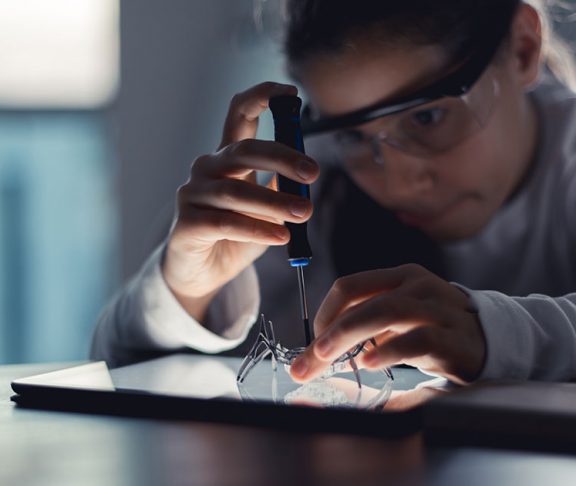
Karen A. Peterson
Chief Executive Officer, National Girls Collaborative Project
How can you plan for a future you have not seen? Research shows that representation and role models are critical for encouraging girls to pursue educational activities and career pathways in STEM.
Building a future STEM workforce with more women and people of color is necessary; diverse perspectives and experiences are needed to address the many challenges facing society.
Debunking false perceptions
When girls are shown successful females in STEM, it shifts their perceptions about who participates and increases girls’ identification with these skills and careers. Seeing female role models also helps debunk myths about STEM fields — for example, some girls have a false belief that computer science is “isolating” or “not creative.” Instead, studies show that being introduced to and engaging with role models demonstrates the collaborative aspects of STEM work and gives girls a more authentic understanding of the wide range of career options available.
For girls of color, cultural stereotypes of STEM disciplines can be even more limiting. Girls and women of color may struggle to overcome perceptions of STEM as a career path better suited to white males. Research studies have shown that girls of color are often not recognized for their science skills and so may not develop a connection or interest in STEM. The intersectionality of gender, race, ethnicity, and class create compounding barriers.
The harmful effects of cultural representations
Media and cultural representations of STEM all too often show the field as male-dominated and white. This limited representation prevents significant numbers of youth from participating in educational opportunities and limits their ability to see a future for themselves in STEM. The National Girls Collaborative is excited to see that changing as multiple initiatives are working to increase media representation of women and people of color in STEM outreach.
The inequities in our current STEM workforce are not the result of gender, racial, or ethnic differences in abilities. Rather, they reflect larger societal inequities and limited representation. Parents and educators can change this by introducing youth to inspiring, diverse female role models, helping everyone see STEM as something that girls can, in fact, be.

